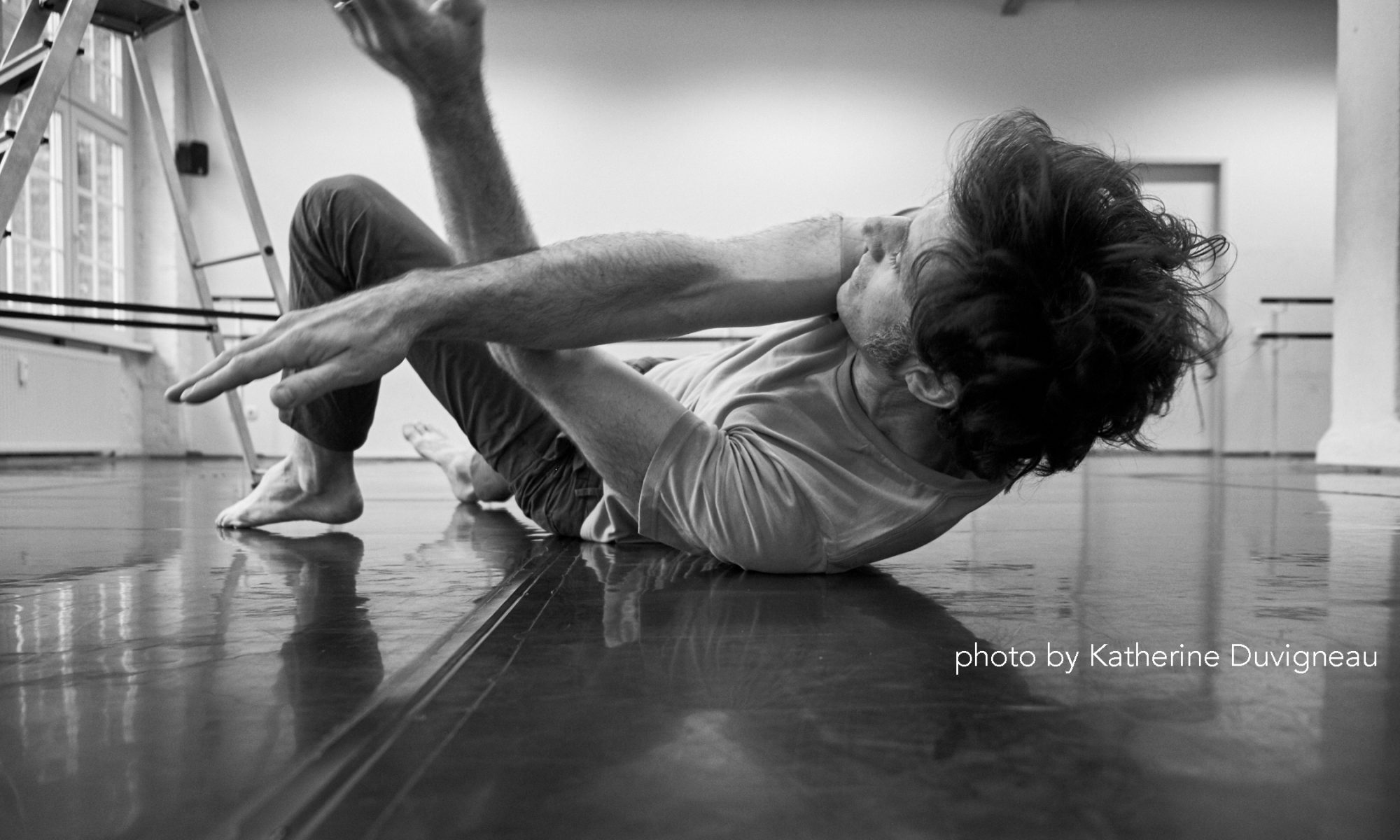Indetermination in determination
Indetermination
here-ing
my inner homophone algorithm kicked in today during a class I was taking.
“hearing” became “here-ing”
Which made me think of “there-ing”
So what are here-ing and there-ing? The process of being here and the process of being there. If here is located to space, it is also located to time. So here-ing can occur in space and in time. And if we can conceptually separate space and time, is it possible to engage in here-ing in space and there-ing in time?
What about there-ing in space and here-ing in time?
must investigate this further.
Dance as Mixture
As everybody knows, there is a limited set of joints, and a much larger set of possible movements. More important for our purposes is the fact that there is an unlimited set of mixtures of joints and movement.
original text
As everybody knows, there is a limited set of chemical elements, ninety or a hundred, and a much larger set of chemical compounds. More important for our purposes is the fact that there is an unlimited set of mixtures of elements and compounds.
Gibson, James J. 2015. The Ecological Approach to Visual Perception. New York: Psychology Press.
A neural perspective on SIDM
Consider the problem that dancer has to solve in the context of complex action planning, say engaging in solo improvised dance/making (SIDM) for 20 minutes within a given stage space. A variety of goals and subgoals – with their concomitant perceptual cues and motor tasks – need to be coordinated in such a way that the distal temporal end-state is reachable via a series of successive previous states, each of which must be ordered in relation to each other in space and time. Moreover, the dancer must be sensitive to changes in the external environment. A problem at a given stage necessitates the re- coordination of an indeterminate number of intermediate stages, which must be adjusted flexibly, accurately, and perhaps quickly, in order to reach the end-state. In addition, unforeseen intervening stimuli must be judged to be relevant or irrelevant, and the correct ordering of spatial and temporal sub-tasks must be maintained despite distracters.
original text
Consider the problem that a control system has to solve in the context of complex action planning, say finding the right type of spaghetti at the supermarket. A variety of goals and subgoals – with their concomitant perceptual cues and motor tasks – need to be coordinated in such a way that the distal temporal end-state is reachable via a series of successive previous states, each of which must be ordered in relation to each other in space and time. Moreover, the system must be sensitive to changes in the external environment. A problem at a given stage necessitates the re- coordination of an indeterminate number of intermediate stages, which must be adjusted flexibly, accurately, and perhaps quickly, in order to reach the end-state. In addition, unforeseen intervening stimuli must be judged to be relevant or irrelevant, and the correct ordering of spatial and temporal sub-tasks must be maintained despite distracters.
from Uithol, Sebo, et al. “Why We May Not Find Intentions in the Brain.” Neuropsychologia, vol. 56, 2014, pp. 129–139.
CI as a Form of Ethnic Dance
#Kealiinohomoku
It is good anthropology to think of contact improvisation as a form of ethnic dance. Currently, that idea is unacceptable to most Western dance scholars. This lack of agreement shows clearly that something is amiss in the communication of ideas between the scholars of dance and those of anthropology, and this paper is an attempt to bridge that communication gap.
Although claims have been made for universal dance forms or international forms in actuality neither a universal form nor a truly international form of dance is in existence and it is doubtful whether any such dance form can ever exist except in theory.
Nevertheless, contact improvisation is a product of the Western world, and it is a dance form developed by Caucasians who speak Indo-European languages and who share a common European tradition. Granted that contact improvisation is international in that it “belongs” to European countries plus groups of European descendants in the Americas. But, when contact improvisation appears in such countries as Japan or Korea it becomes a borrowed and alien form. Granted also that contact improvisation has had a complex history of influences, this does not undermine its effectiveness as an ethnic form.
So distinctive is the “look” of contact improvisation, that it is probably safe to say that contact improvisation dances graphically rendered by silhouettes would never be mistaken for anything else.
The question is not whether contact improvisation reflects its own heritage. The question is why we seem to need to believe that contact improvisation has somehow become a-cultural. Why are we afraid to call it an ethnic form?
We should indeed speak of ethnic dance forms, and we should not believe that this term is derisive when it includes contact improvisation since contact improvisation reflects the cultural traditions from which it developed.
spacetime
Real-Space Composition
be t/here

predetermination

